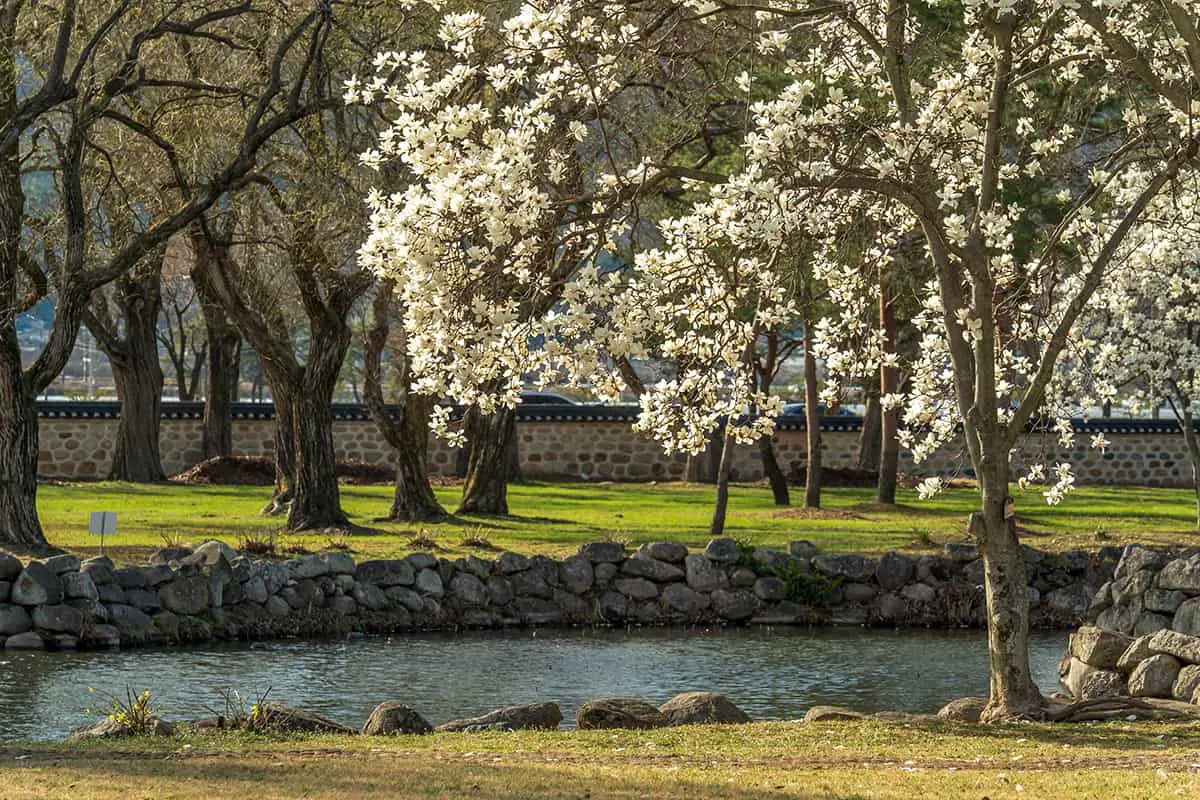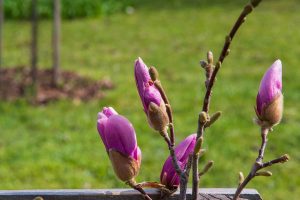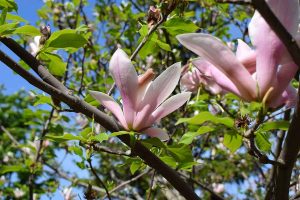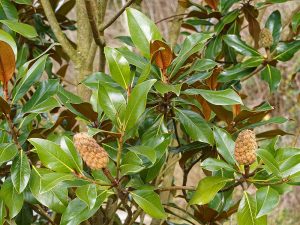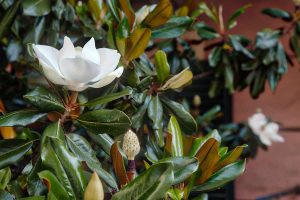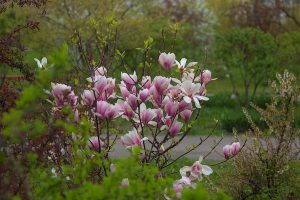wMagnolia trees are loved for the stunning flowers they produce, which are typically cream or white but can also come in shades of pink and purple. These trees belong to the Magnoliaceae, with the Magnolia genus comprising over 200 different species.
Here we look at 15 of the most popular types of Magnolia trees from around the world.
Table of Contents
Sweet Bay Magnolia
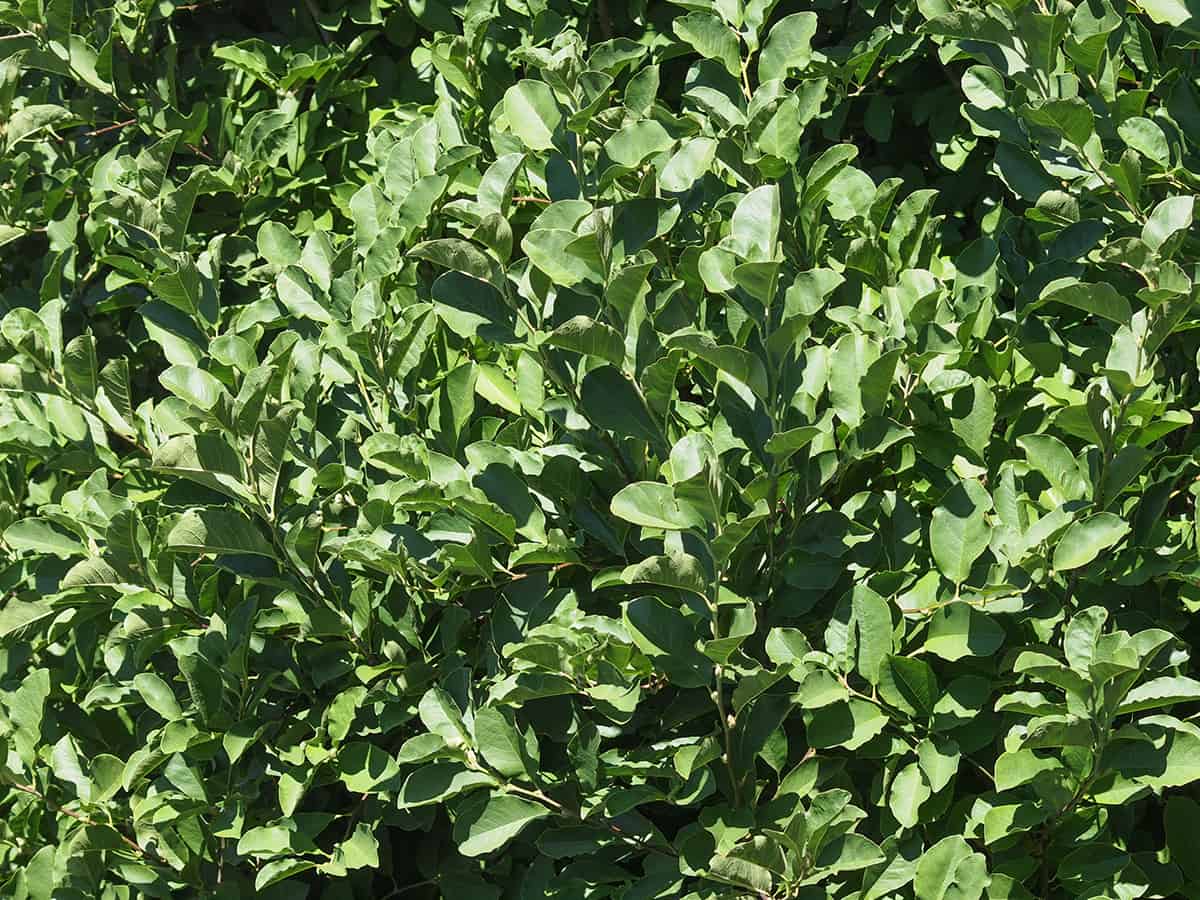
- Botanical name: Magnolia virginiana
- Maximum height: Up to 60 feet
- Maximum spread: Up to 60 feet
- USDA hardiness zones: 5- 10
This Magnolia tree is native to much of the eastern half of the United States, from the northeast through to the southeast, including Texas, Tennessee, Virginia, Georgia, Florida, Louisiana, New York, New Jersey, Delaware, Massachusetts, Alabama, and Maryland. Locally throughout different regions, the tree is also commonly known as Swamp Magnolia, Small Magnolia, Beaver Tree, Laurel Magnolia, Sweet Magnolia, and White Bay.
This magnolia can be deciduous or evergreen depending on the climate it is grown in, and the climate will also affect its growth habit. In cooler, northern regions, the tree will grow to a maximum height of around 35 feet, while in warmer southern regions, it can grow to 60 feet tall.
In cooler climates, the magnolia will more commonly take the shape of a multi-stemmed shrub, while it is more likely to be a medium to a large-sized single-trunk tree in warm climates. The plant produces white cup-shaped blooms, which are heavily scented like lemon, and they open in the morning and close again at night.
Southern Magnolia
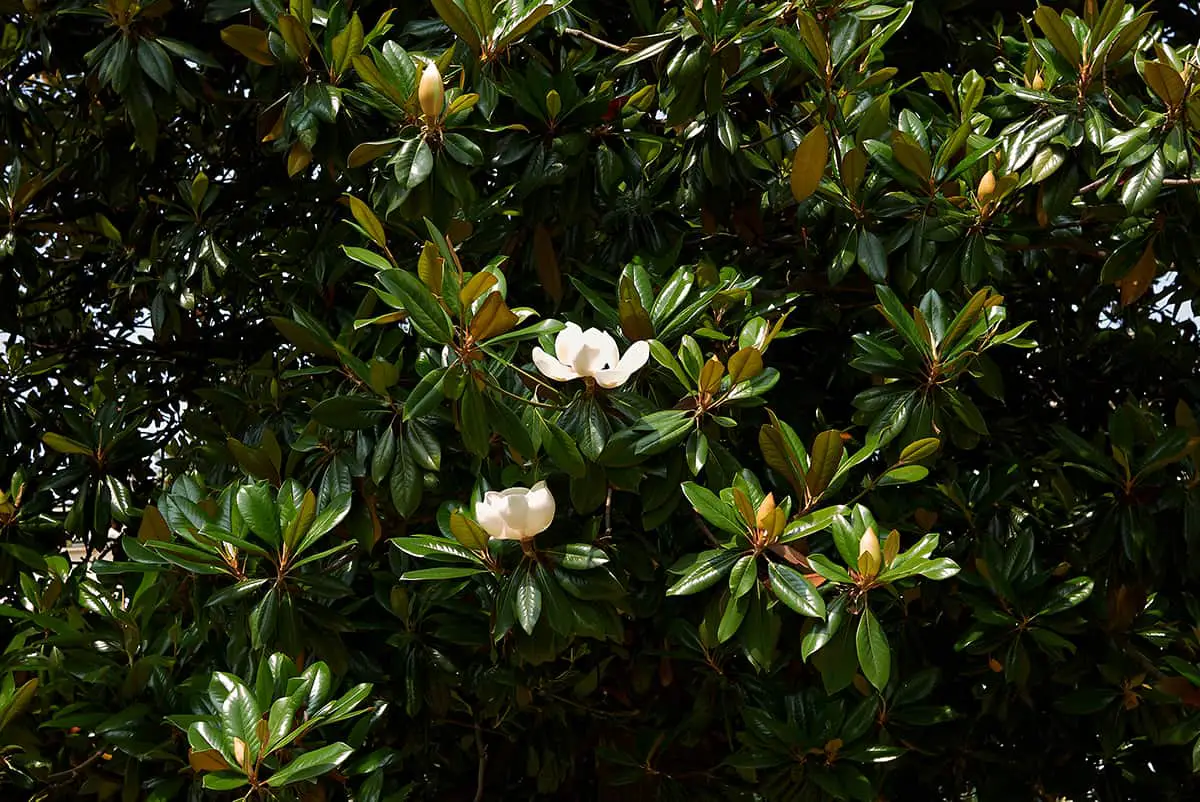
- Botanical name: Magnolia grandiflora
- Maximum height: Up to 80 feet
- Maximum spread: Up to 60 feet
- USDA hardiness zones: 7- 9
The Southern Magnolia is native to the southeastern United States. It is a tree that is iconic and widely associated with this region of the US. In fact, the flowers of the Southern Magnolia are the state flowers for both Mississippi and Louisiana, and it is one of the most popular trees across the southern landscape.
It produces huge creamy-white flowers which can measure up to 12 inches in diameter. Flowers give way to seed pods which contain large pink-red seeds. The leaves are dark green, smooth, and leathery, with an elliptical shape that comes to a point at the tip. Unusually for a magnolia, this tree actually performs best in a partially shaded position.
Popular varieties of Southern Magnolia include ‘Kay Parris’, which is slightly more hardy, and ‘Little Gem’, which is smaller in stature, reaching a maximum height of around 20 feet.
Star Magnolia
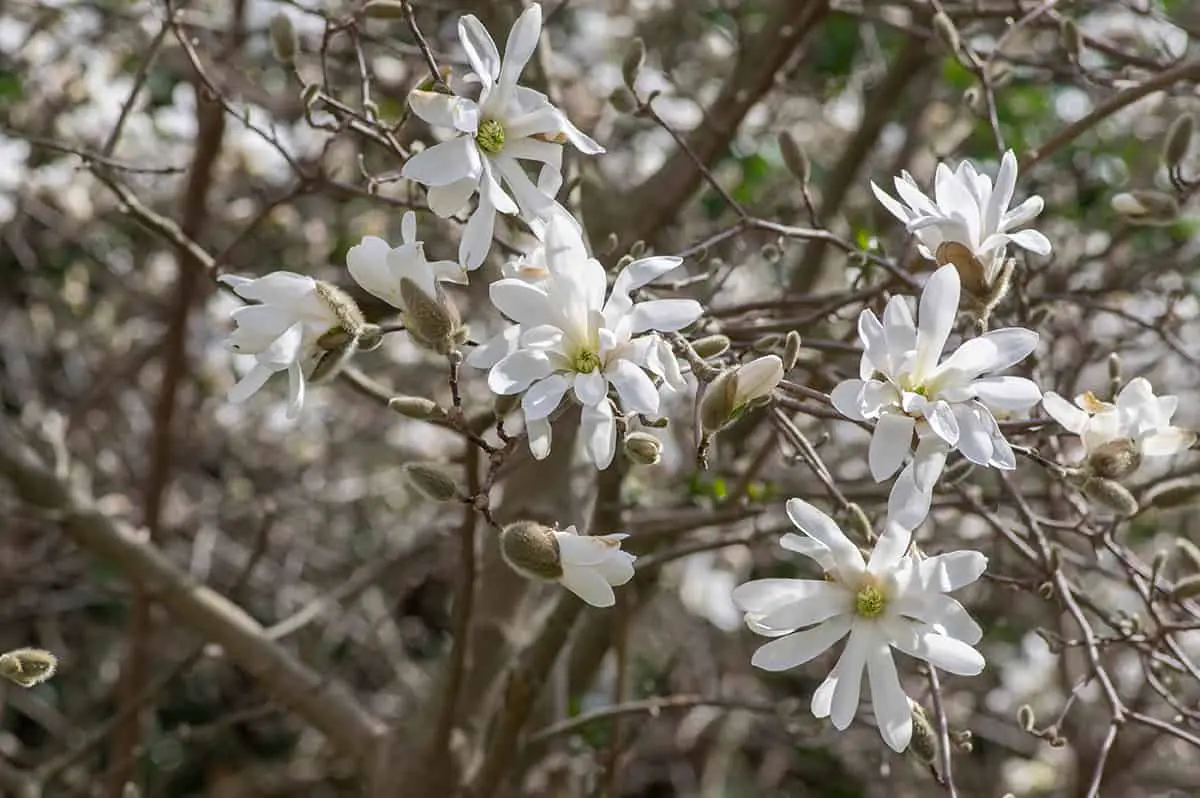
- Botanical name: Magnolia stellata
- Maximum height: Up to 20 feet
- Maximum spread: Up to 15 feet
- USDA hardiness zones: 4- 8
This deciduous magnolia tree is native to Japan, where it produces pink-tinged white flowers early in spring. The blooms arrive on leafless branches before the foliage begins to unfurl several weeks later. The flowers have petals that are long and slender, pointing outwards to create a star shape, hence the common name for this tree of Star Magnolia.
The tree thrives in moist soils, in full sun or partial shade. It is very hardy, but late frosts can damage early-blooming flowers. Varieties of Star Magnolia include ‘Jane Platt’, which produces luscious double blooms in baby pink, and ‘Royal Star’, whose white flowers feature drooping petals that create the look of a firework exploding.
Cucumber Tree

- Botanical name: Magnolia acuminata
- Maximum height: Up to 70 feet
- Maximum spread: Up to 30 feet
- USDA hardiness zones: 4- 8
This tree is native to the eastern United States and southeastern Canada. It is the hardiest of all types of magnolia species, but the flowers are among the least showy. The flowers arrive from late spring to early summer and are a yellow-green shade. They are smaller than most magnolia flowers at around 2 inches across, and they appear high up on the crown of the tree, so it’s easy to miss them entirely.
The buds and flowers of the tree are edible, and the fruits that follow resemble cucumbers, hence the common name. The leaves on this tree are large for a magnolia, spanning lengths of 10 inches. This makes the Cucumber Magnolia an excellent shade tree, but since it is deciduous, the large leaves can leave quite a mess behind in fall.
Ashe’s Magnolia
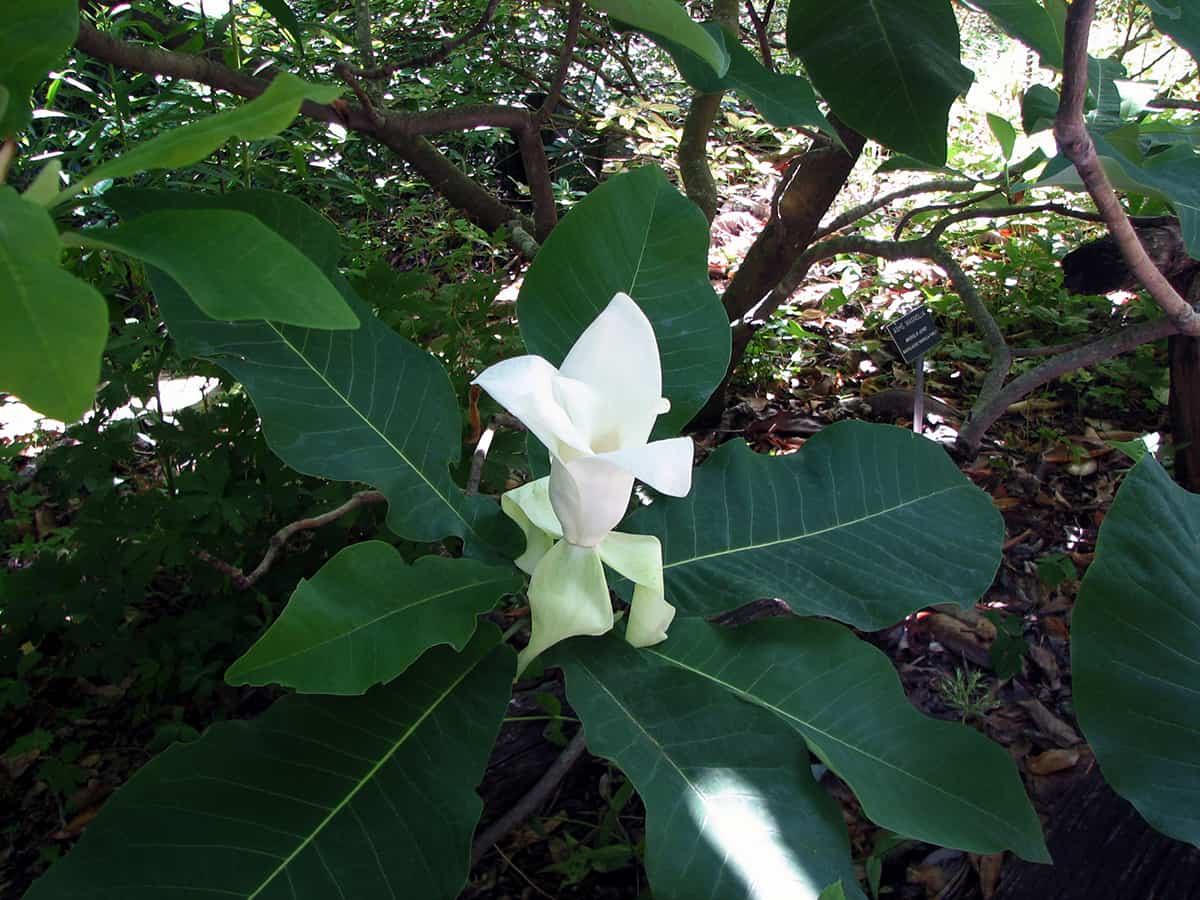
- Botanical name: Magnolia ashei
- Maximum height: Up to 30 feet
- Maximum spread: Up to 20 feet
- USDA hardiness zones: 6- 9
This is a rare species of magnolia, which is native only to Florida. It is named after a forester for the United States Forest Service, William Willard Ashe, who discovered the plant.
It can take the shape of a small tree or large shrub and has exceptionally large foliage. A single leaf can measure 3 feet in length and 1 foot in width. It is closely related to the Bigleaf Magnolia and is sometimes considered to be a subspecies of this tree, but it is actually a separate species entirely.
Lily Magnolia
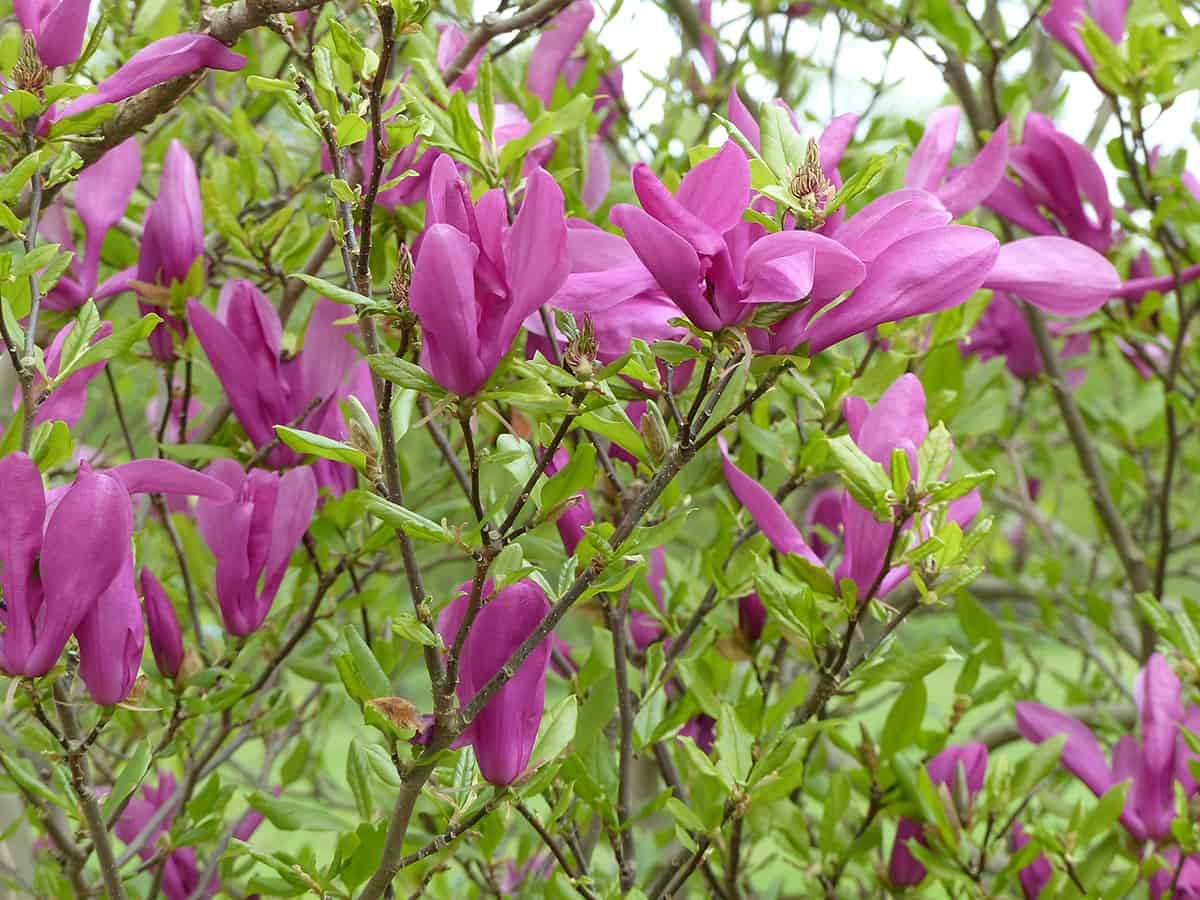
- Botanical name: Magnolia liliiflora
- Maximum height: Up to 12 feet
- Maximum spread: Up to 12 feet
- USDA hardiness zones: 5- 9
This deciduous magnolia takes the form of a shrub with a naturally rounded habit. It produces attractive flowers which are lily-shaped and can be purple, pink, yellow, or red, depending on the variety of the plant. The Lily Magnolia is native to southwestern China.
Northern Japanese Magnolia
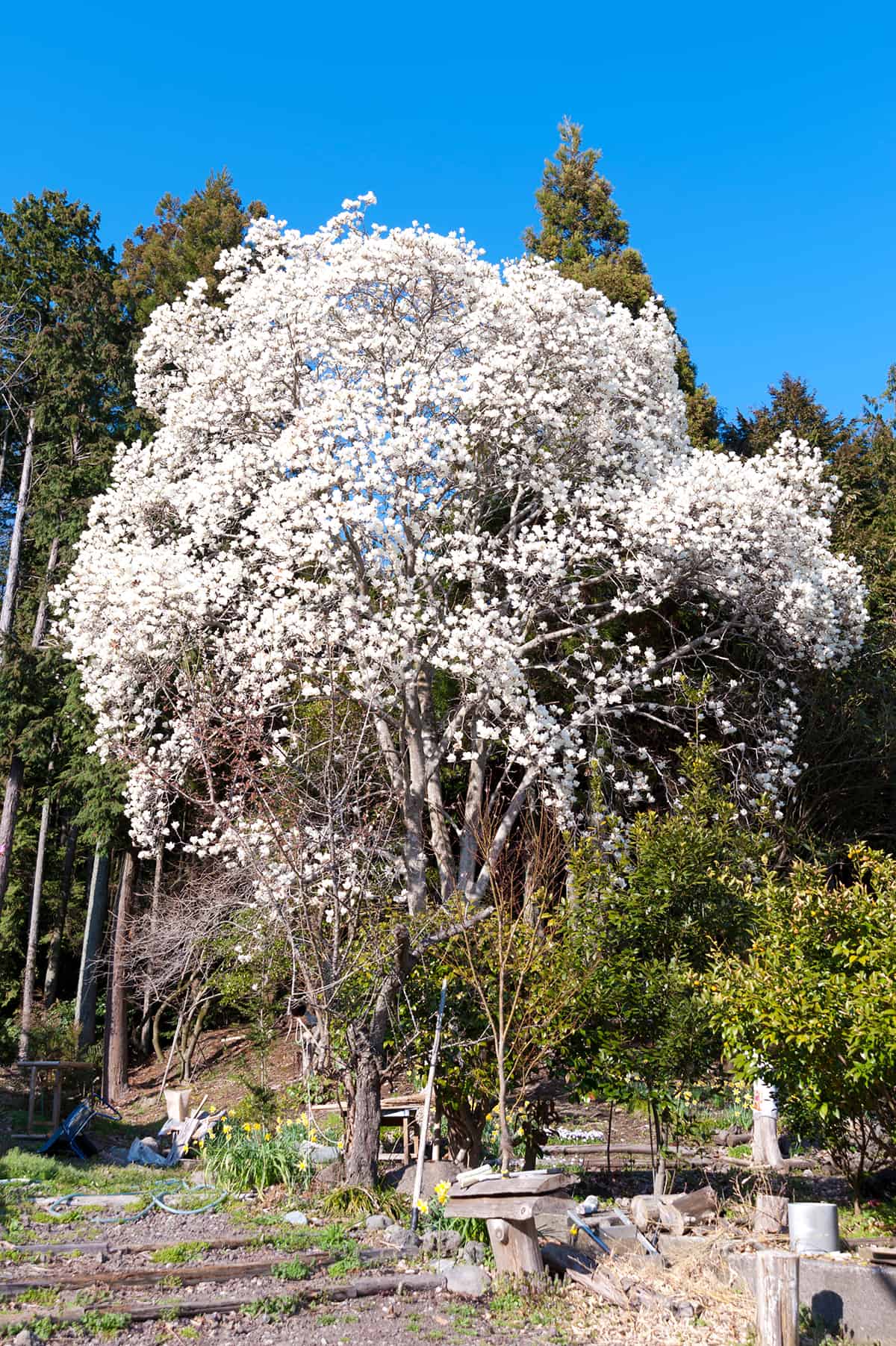
- Botanical name: Magnolia kobus
- Maximum height: Up to 30 feet
- Maximum spread: Up to 20 feet
- USDA hardiness zones: 5- 8
This is a deciduous magnolia tree that has a slender habit and a tendency to produce multiple trunks. It is native to Japan and Korea and is also known as the Kobus Magnolia and the Kobushi Magnolia.
The tree blooms with white flowers measuring around 4 inches across. These are followed by pink fruits, which burst open to show bright red seeds. This magnolia grows well in both full sun and partial shade.
Loebner Magnolia
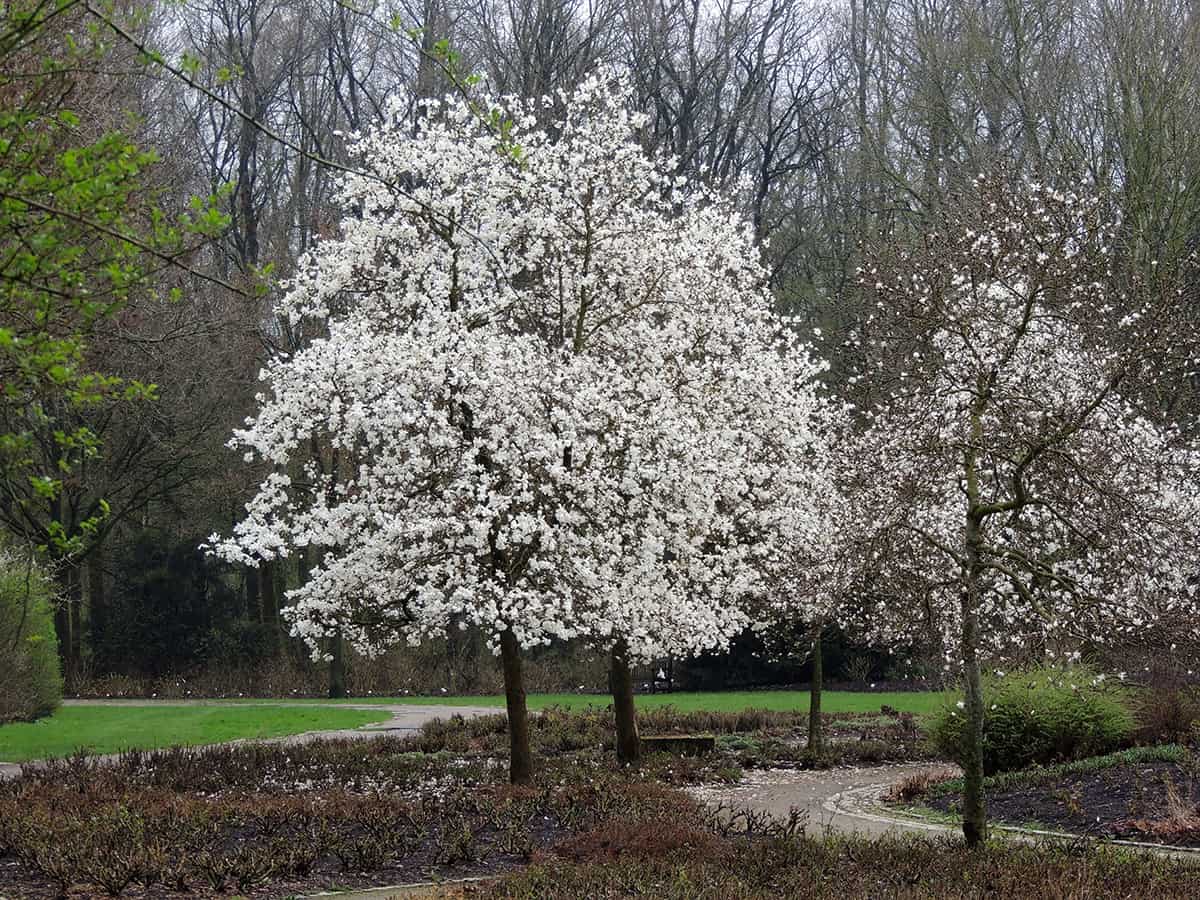
- Botanical name: Magnolia × loebneri
- Maximum height: Up to 30 feet
- Maximum spread: Up to 20 feet
- USDA hardiness zones: 4- 9
This is a hybrid magnolia species that is created by crossing the Star Magnolia with the Kobus Magnolia. The result is a hardy, deciduous tree which produces dramatic, showy flowers very early in spring.
The flowers will be pink, with the star shape associated with the Star Magnolia, and typically measure around 5 inches long. They arrive on bare branches before the arrival of the foliage. This plant thrives in moist, well-draining soil, in full sun or partial shade.
Anise Magnolia
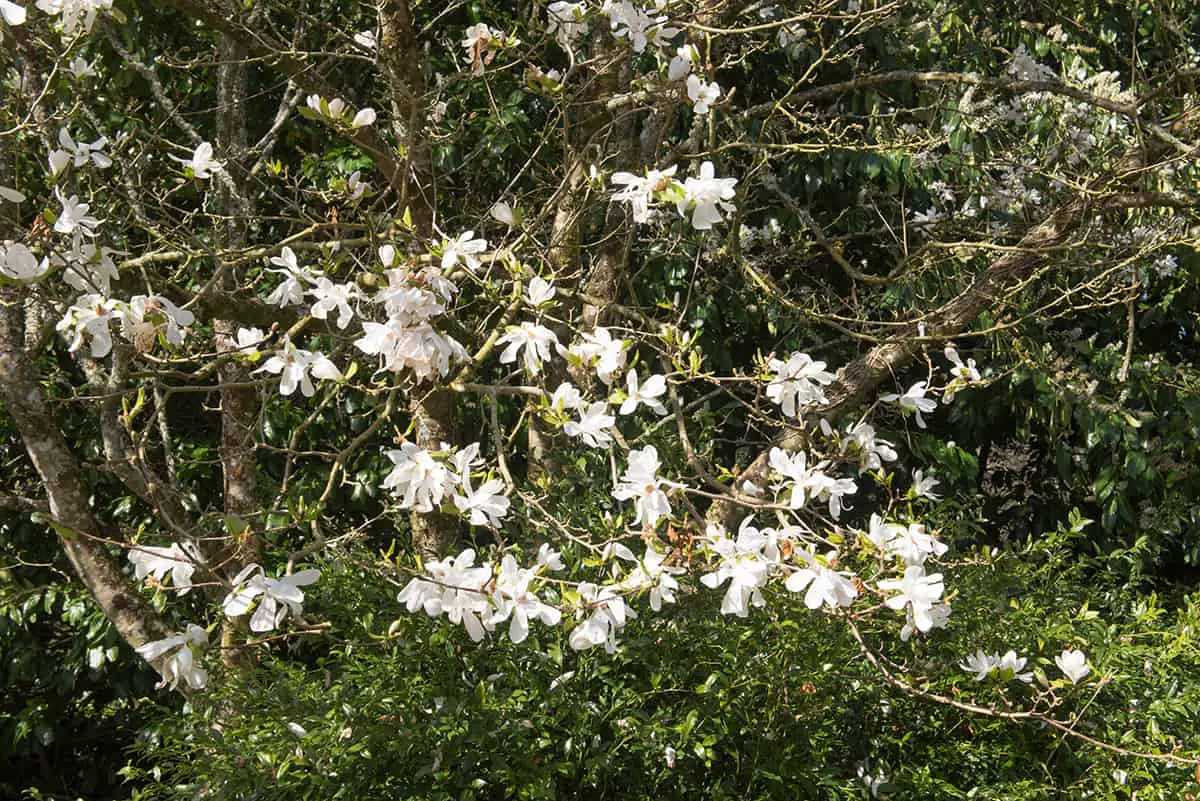
- Botanical name: Magnolia salicifolia
- Maximum height: Up to 40 feet
- Maximum spread: Up to 30 feet
- USDA hardiness zones: 6- 9
This is a deciduous tree that also goes by the name of Willowleaf Magnolia because the leaves bear a strong resemblance to willow leaves. Flowers arrive on bare branches in spring before the foliage unfurls.
The tree blooms profusely to create a dramatic display of elegant white flowers. The flowers are held in an upright position and measure up to 7 inches long. They are also heavily scented with a pleasant orange aroma. The foliage of the tree is green throughout summer and fades to gold before dropping to the ground in fall.
Bigleaf Magnolia
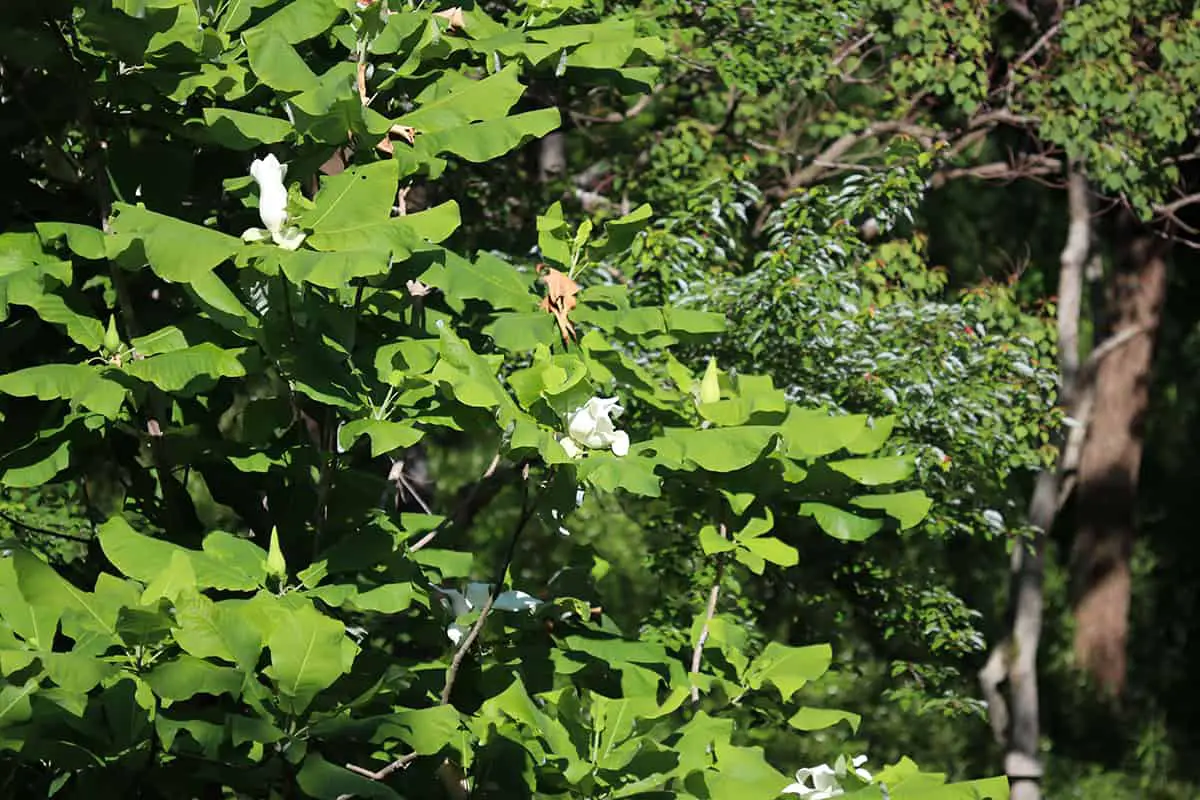
- Botanical name: Magnolia macrophylla
- Maximum height: Up to 40 feet
- Maximum spread: Up to 40 feet
- USDA hardiness zones: 6- 9
This popular specimen or shade tree is native to Mexico, the Caribbean, and the southeastern US. It is known for its oversized foliage, with each leaf typically measuring 3 feet in length and 1 foot in width.
This is a deciduous plant that produces stunning white flowers which are tinged with pink at their base. Like the leaves, the flowers are large at around 10 inches across. The flowers will develop into red oval-shaped fruits, which create an additional visual appeal to the tree. It thrives in full sun or partial shade and can tolerate short periods of drought.
Saucer Magnolia
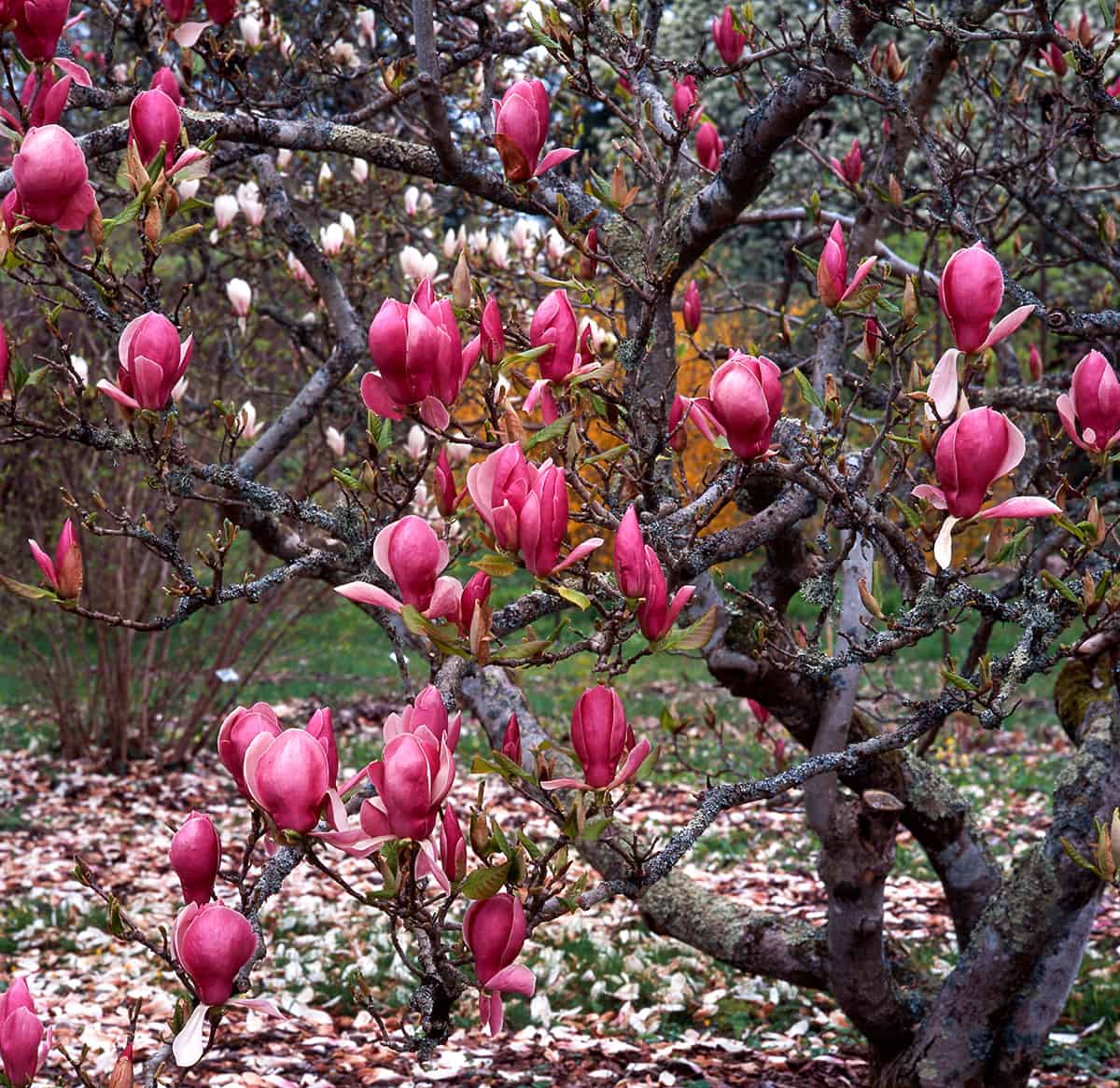
- Botanical name: Magnolia x soulangiana
- Maximum height: Up to 25 feet
- Maximum spread: Up to 20 feet
- USDA hardiness zones: 4- 9
This is a hybrid species of magnolia produced by crossing the Yulan Magnolia with the Lily Magnolia. It can be grown as a small tree or a large shrub and is ideal for bringing beauty and interest to small gardens.
It is known for its dramatically showy tulip-shaped pink-white flowers, which arrives en masse on bare branches in early spring. The leaves of the plant are dark green and oval shaped, and drop from the tree in fall. The Saucer Magnolia is believed to be the most common species of magnolia in the US.
Umbrella Magnolia
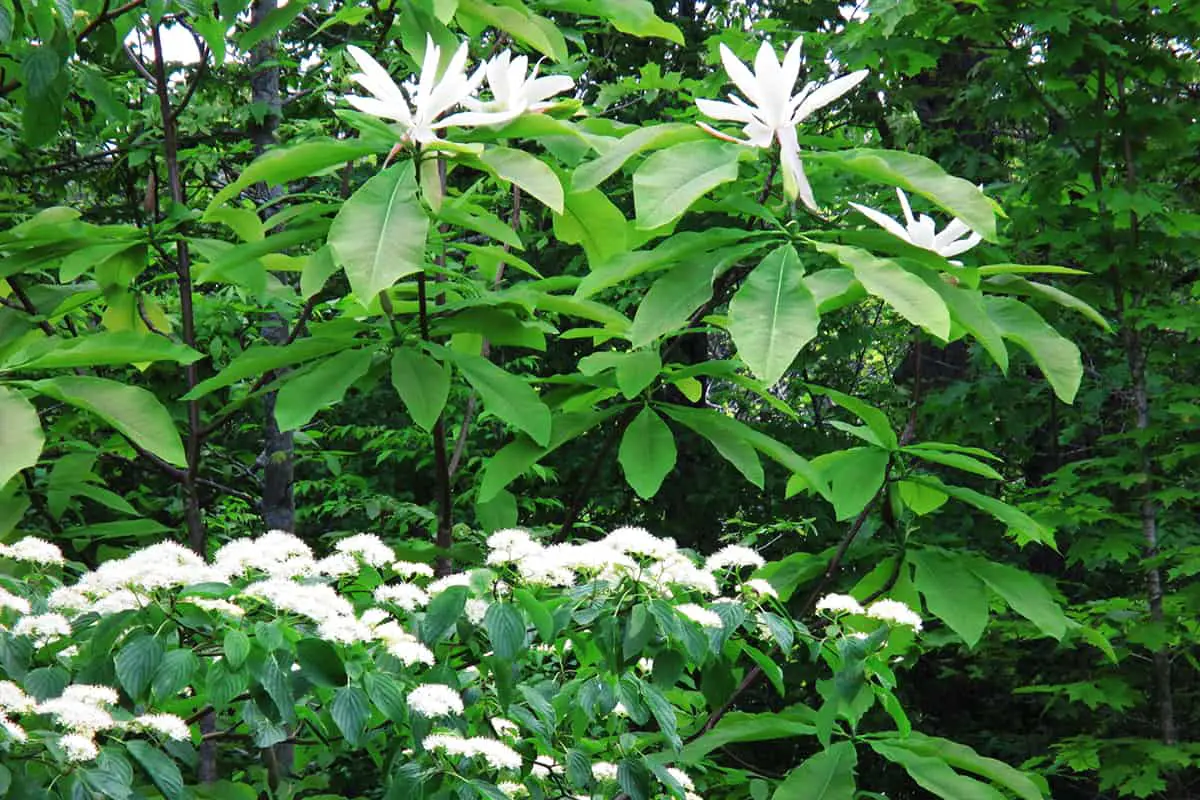
- Botanical name: Magnolia tripetala
- Maximum height: Up to 30 feet
- Maximum spread: Up to 30 feet
- USDA hardiness zones: 5- 9
This deciduous tree is native to mountain regions in the eastern United States. It has multiple trunks, and a broad, open crown, making it an excellent shade tree. The flowers produced by this tree are quite large at between 6 and 8 inches across, with creamy white petals shaped like a cup.
The scent of the flowers is known for being quite unpleasant, so the tree is best planted away from sitting areas. The leaves of the tree are large, at around 28 inches by 10 inches per leaf. This plant thrives in partial shade but it can also tolerate full shade in warmer climates or full sun in cooler climates so long as the soil remains moist.
Oyama Magnolia

- Botanical name: Magnolia sieboldii
- Maximum height: Up to 15 feet
- Maximum spread: Up to 15 feet
- USDA hardiness zones: 6- 9
This small tree or shrub is native to Korea, China, and Japan. It is also commonly known as the Korean Mountain Magnolia. It produces modest white cup-shaped flowers with red stamen and has green leaves of around 6 inches in length, which fade to yellow in the fall.
The plant thrives in partial shade since it is an understory tree in its native habitat. It should be protected from strong winds in order to protect the flowers, which can last all summer.
Sprenger’s Magnolia
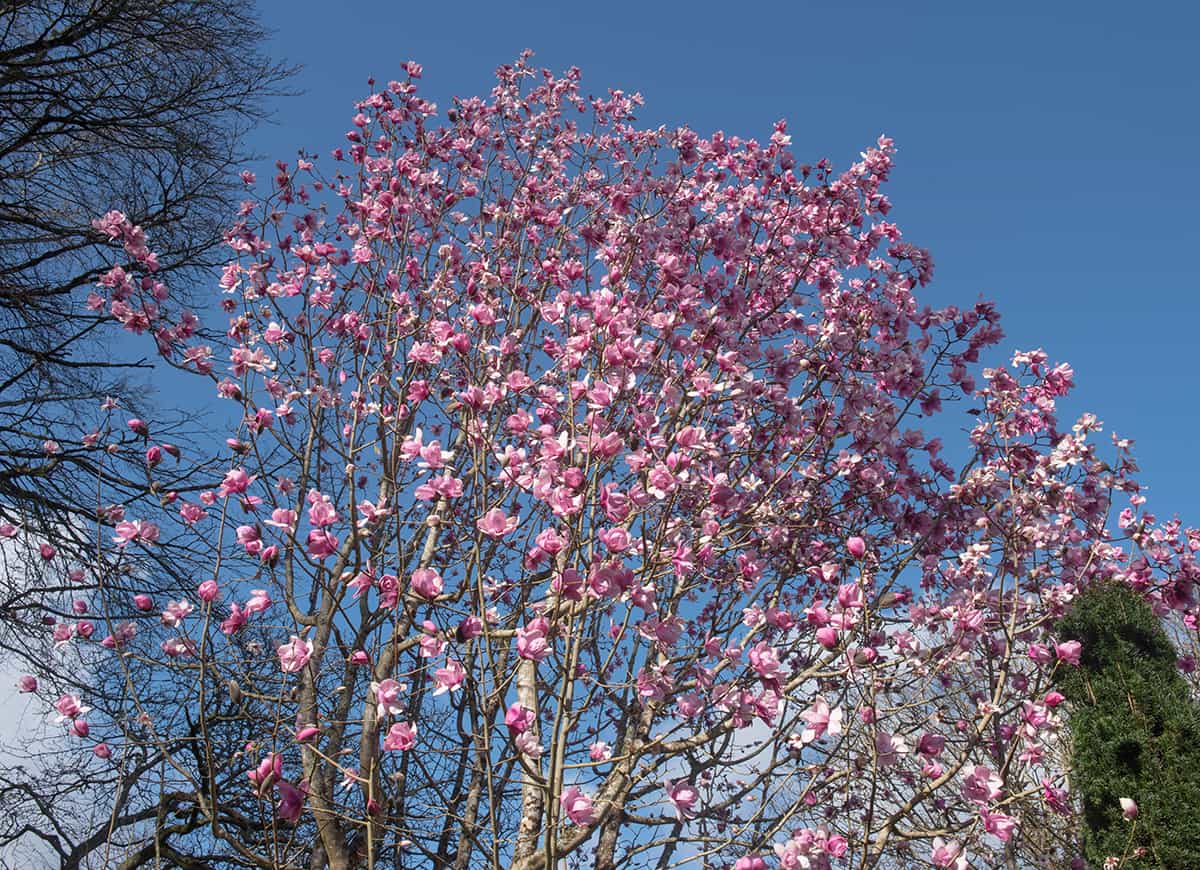
- Botanical name: Magnolia sprengeri
- Maximum height: Up to 50 feet
- Maximum spread: Up to 30 feet
- USDA hardiness zones: 5- 8
This tree is native to China, and it produces dark green leaves, which are silver on the underside. The flowers of this tree are heavily fragranced and measure up to 8 inches across. They are shaped like saucers and can be white, pale pink, or dark pink. This is a great specimen to use for early color in the garden since it blooms early in spring before the leaves emerge.
It thrives in soil that is consistently moist and well-draining, in either full sun or partial shade. Varieties of Sprenger’s Magnolia include ‘Diva’, which has pale pink blooms, and ‘Copeland Court’, which produces large dark pink flowers and has been awarded the Royal Horticultural Society’s Award of Garden Merit.
Yulan Magnolia
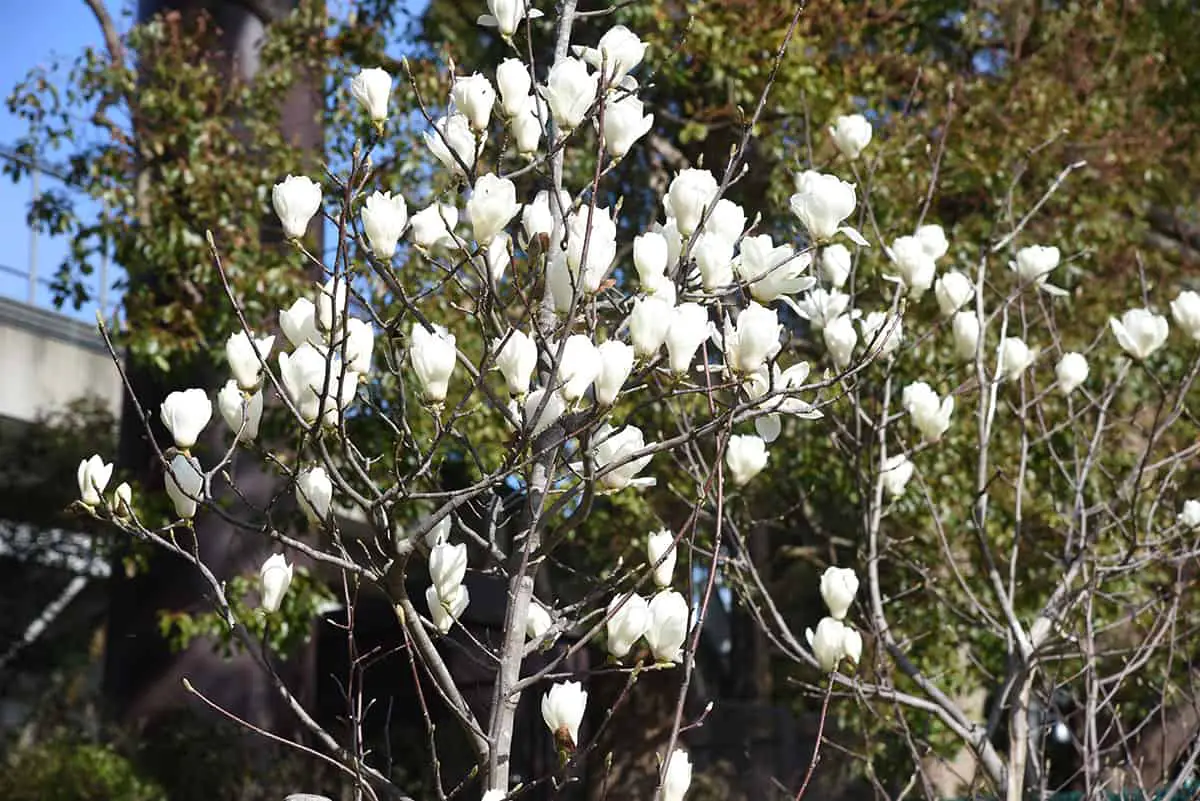
- Botanical name: Magnolia denudata
- Maximum height: Up to 40 feet
- Maximum spread: Up to 40 feet
- USDA hardiness zones: 5- 8
This tree is also commonly known as the Slender Magnolia or the Naked Magnolia. It is native to China, where it has been cultivated since 600 AD. The flowers of the tree were once believed to be a symbol of purity, and they were gifted to emperors in Ancient China. The flower of this tree is also the official flower of Shanghai.
They are ivory in color with a subtle tinge of pink at the base, and they open up into cup-shaped blooms. This is an exceptionally early bloomer, with flowers appearing on bare branches in late winter or early spring. They are lemon-scented and are typically around 3 inches long. The Yulan Magnolia is fast-growing and very hardy, but as the flowers appear very early in the year, they are susceptible to frost damage.
